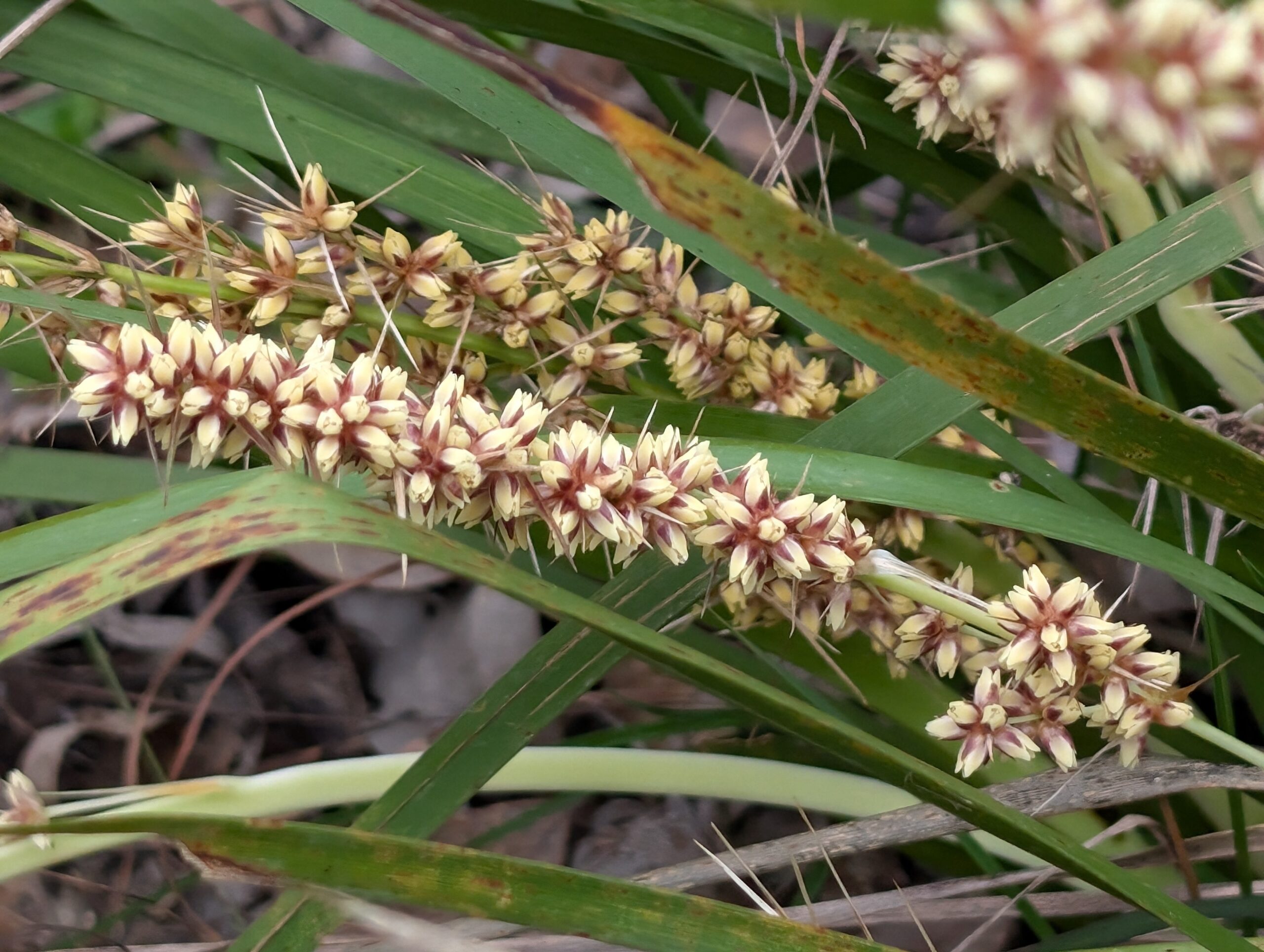Scientific Name Lomandra Longifolia– belonging to the Xanthorrhoeacea family.
Common name – Spiny-head Mat-rush, Basket Grass
A native clumping evergreen grass that recen tly caught our eye due to the lovely seed formation.
Growing – This grass grows in Sunny and light shade. Commonly grown along the east coast and used for erosion control (due to dense growth) in drought tolerant environments. It is also tolerant to light frost, and they are happy grown in a container. This grass does not like prolonged wet periods and can die back.
Flowers – Cream/ yellow scented flowers in Spring or Summer and Winter that provide nectar and attract bees and pollinating insects. Fruiting and brown seedling occurs 1-2 months after flowering.
Height – 1 m and width .6m
Soil – Grows in a range of sandy soils to clay soil (acid to neutral) in swamps, wet areas and on the banks of creeks, hillsides and open forests. In urban areas, it is a versatile plant and a good option for a low maintenance garden, by the pool, or in a coastal garden. 
Pest and Disease – No known pests and diseases.
Edible/ Uses – Seeds can be ground into flour to make breads, and foliage can be split and braided for basket making. The fibrous leaves were also used to make bags, fishing nets and mats.
The tender leaves are also edible, contain water and were used by Indigenous Australians and the flowers are said to taste like peas.
As always, please be mindful of ingesting these seeds without further investigation and proper plant identification.
Propagation – Seed is best sown in Spring and Autumn with an optimum germination temperature of 23-25 degrees, it also doesn’t hurt to soak the seeds in warm water for one to two days before planting. Sow 3-4mm deep and keep warm and moist, expecting germination to occur in one to two months.
This grass can also be propagated by clump division.

You must be logged in to post a comment.